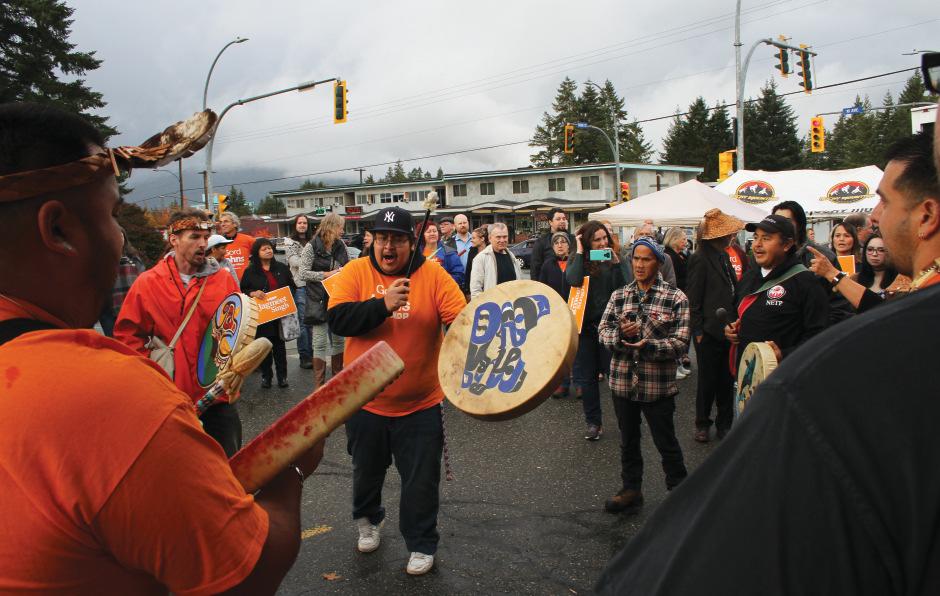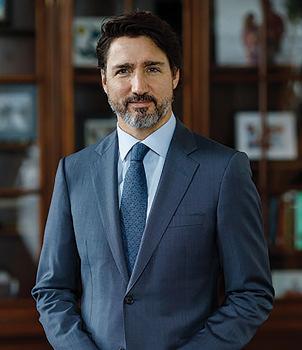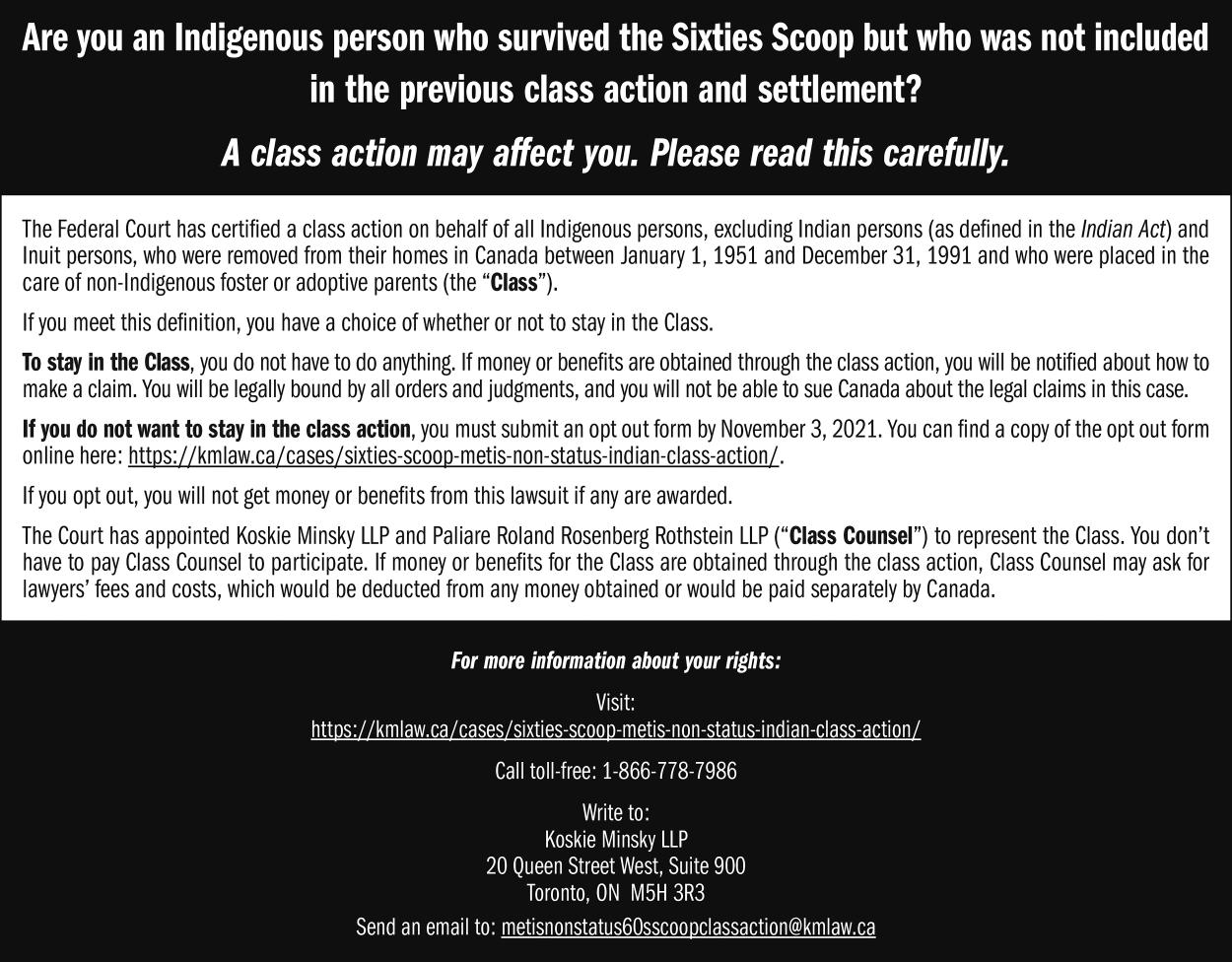
10 minute read
Federal election called
Liberals eye a majority less than two years since last election, while NDP seeks to retain dominance of island
By Eric Plummer Ha-Shilth-Sa Editor
Advertisement
Another election season is underway, after a mid-August announcement from Prime Minister Justin Trudeau that Canadians will head to the polls on Sept. 20 – less than two years since the last federal election took place. By calling the election the Liberals seek to reclaim the majority government they lost in 2019, due in large part to surging support for the Conservatives led by Andrew Scheer. Now the biggest threat to Trudeau’s hopes of a majority lie in how the Conservatives, under new leader Erin O’Toole, can attract voters. When Parliament was dissolved the Liberals had 155 seats, while the Conservatives held 119, followed by the Bloc Québecois’ 32 and the NDP’s 24. On the outskirts sat fi ve independent MPs and 2 Green Party representatives. But in Nuu-chah-nulth territory on the west coast of Vancouver Island federal representation has gone to the NDP over the last few elections. Since 2015 the three ridings that cover the home territories of Nuu-chah-nulth nations, North Island-Powell River, Mid-Island and Cowichan-Malahat-Langford, have gone orange. Now all three of these respective incumbents, Rachel Blaney, Gord Johns and Alistair MacGregor, seek re-election, after all of Vancouver Island went NDP in 2019 except two ridings in Nanaimo and Victoria’s Saanich area, which were claimed by the Greens. Data collected from some individual polls in 2019 show an overwhelming support for the NDP in communities with a high proportion of Nuu-chah-nulth voters. In Ahousaht 164 of the total 175 votes counted on election day were for Gord Johns, while Rachel Blaney took 66 of the 83 ballots collected in Kyuquot. Such strong support in remote communities comes down to how eff ectively a candidate can maintain relationships, said Alexander Netherton, a professor of Political Studies at Vancouver Island University.
Annamie Paul - Green Party “You’ll fi nd political parties [that] really try to make ongoing relationships with Indigenous peoples,” he said. “The NDP is pretty good at that on this island, the Liberals on the island less so and the Conservatives don’t have a really great track record of that since the 1950s.” Of foremost concern this election is how the government is going to manage contributing factors to global warming, said Judith Sayers, president of the Nuu-chahnulth Tribal Council. The situation so dire she doesn’t even refer to it as “climate change”, after heat records were broken in B.C. this summer while the province saw 860,800 hectares burned from over 1,500 wildfi res – more than double the average area burned from over last

Photo by Eric Plummer A federal election has been called for Sept. 20. Pictured are Tseshaht members performing in Port Alberni before the arrival of NDP Leader Jagmeet Singh two years ago. The last federal election was held on Oct. 21, 2019. the First Nations’ own fi sheries plans, not the allocations that were set by DFO. “I have been continually shocked with the various allocations of fi sh species that the federal government has deemed appropriate. We have the inherent right to fi sh and sell fi sh in our traditional territories,” said Ahousaht Ha’wilth Hasheukumiss, Richard George, following the declaration. “Everything within our waterways is 100 per cent ours, and it is our right to continue our fi shery. We are willing to share 50 per cent of our resources with the other user groups, but at the end of the day, the resources are ours to manage through our own conservation Erin O’Toole - Conservatives practices.” decade of fi re seasons. “There’s seems to be a real push by the “No. 1 priority for me is climate government to stop us from accessing emergency. I think we’re far past cli- our rights. I think it’s become a really big mate change,” stressed Sayers. “Global warming has become an incredible issue for us, dealing with all these really high temperatures, forest fi res, fl ooding.” She noted some progress in the recent passing of the Canadian Net-Zero Emissions Accountability Act, but this legislation has a goal of 2050 to bring greenhouse gases under control. “It’s too far away and there are really no consequences in it,” said Sayers. “I think that the government has got to take immediate measures to deal with climate, because it’s impacting our lives, it’s impacting our sea resources, it’s impacting our housing, our health.” Over Trudeau’s fi rst term as Prime Minister he set up lofty expectations for Jagmeet singh - NDP First Nations, standing up in the house of issue across the country,” noted Sayers. Commons in 2017 to declare that no re- “We just met with the fi sheries minister a lationship was more important to Canada few weeks back, and she had no committhan that with Indigenous peoples. But ment to Nuu-chah-nulth whatsoever. It over the following years frustration was, ‘Well, I’m going to have to check brewed among Nuu-chah-nulth people, with my staff on that’.” particularly due to the failure of Fisher- But recent news from former residential ies and Oceans Canada to fi nd agreeable school sites could force candidates to terms with the nation’s negotiators. Talks give more recognition to the concerns of between both sides have progressed little, First Nations. The discovery of 215 undespite multiple court rulings that upheld marked graves on the old grounds of the the rights of fi ve Nuu-chah-nulth nations Kamloops Indian Residential School was to catch and sell species from their home the fi rst of several to seize public attenterritories. tion this summer. The issue escalated to a declaration in “These are universal injustices that we early August from the nations’ Ha’wiih, can all appreciate, and it makes, I think, authorizing members to fi sh according to Canadians feel uncomfortable, which it ought to,” said Netherton. Although the existence of children’s remains at the former school sites was addressed years ago by the Truth and Reconciliation Commission, it took the recent discoveries to force politicians to give the issue prominence. “After the TRC there was a bit of movement but some kind of implicit denial,” said Netherton. “It’s as if the signifi cance of that fact was kind of buried. Identifying these unmarked graves really, in my view, brings this notion of a cultural genocide right to our front door.” Now candidates have less than a month Justin Trudeau - Liberal Party to gain the trust of voters, but the decision among Nuu-chah-nulth people to engage in the election will depend on how they see their connection to the federal government, said Sayers. “I think there’s two schools of thought. One is we’re a citizen of the Nuu-chahnulth nation, we’re not a citizen of Canada, so I’m not going to vote and that’s their politics and not mine,” she commented. “Others are directly impacted by the federal government, whether it’s fi sheries or justice or health, and they need to have a say in those things.” “If we were going to poll Québécois, the majority would say. ‘I am more attached to Quebec than I am to Canada’, said Netherton. “The really interesting thing about living in a federation - and of course with treaty people - is that we can have multiple identities. The trick now is to be proud and to assert those identities.”



The growing forestry fi rm signs MOU, promises future business and cultural co-operation with the First Nation
By Mike Youds Ha-Shilth-Sa Contributor
Port Alberni, BC - Jobs and fi bre supply are key factors in a memorandum of understanding between Tseshaht First Nation and San Group, but the new agreement extends beyond business, promising collaboration on a cultural level as well. “There are so many ways for us to work together,” said Wahmeesh, Ken Watts, Tseshaht chief councillor after the MOU was signed in late June. “Today is the beginning of our formal relationship,” said Kamal Sanghera, San’s CEO. “We have been working with Tseshaht for a number of years and look forward to a number of important projects.” A Langley-based forestry company with an emerging presence in the Port Alberni, San arrived in the valley fi ve years ago promising to do business diff erently. The company prides itself on innovation to achieve new effi ciencies with an emphasis on value-added wood product manufacturing and exporting. San’s investment in the forest sector has created a buzz on the Island and stands in contrast to the closure of more than 100 B.C. mills over the past two decades. “The way San supports this is it gets more value from the wood we process,” said Mike Ruttan, San Group spokesman. “We don’t export raw logs, we create value around the logs we do harvest.” Since then, the company has followed suit, investing more than $100 million in the valley through purchasing and upgrading the former Coulson Mill just south of Port Alberni for smaller dimen-

Photo submitted by San Group San Group CEO Kamal Sanghera, left, and Tseshaht Chief Councillor Ken Watts at the signing of a memorandum of understanding between the company and Tseshaht First Nation. sion logs. The San Group has also built a remanufacturing plant next to the former Catalyst paper mill (now owned by Paper Excellence Canada). Last month, San agreed to take over the Port Alberni Port Authority’s deep-water Berth 3 dock with a view to exporting overseas, another $115 million invested. They have a four-hectare site undergoing development on Hector Road and recently purchased from the City of Port Alberni a potential residential development site off Burde Street. The company exports products to 27 countries and was named B.C. Exporter of the Year in 2018. That strength goes hand in hand with Port Alberni’s strategic advantage as a designated federal port, allowing direct export. San also tries to create a more established presence in the communities in which it operates, Ruttan said. Its Alberni Valley operations are located in local First Nation territories. The company has signed MOUs with B.C. First Nations before, but this is the fi rst to include cooperation on a cultural level, Ruttan said. “Certainly, what San is involved in as a core of our business, is processing cedar, which is incredibly important to First Nations people on the West Coast,” Ruttan said. “Initially, it’s all around the fi bre,” he stressed. San Group could see a good amount of fi bre coming out of it, he added. Tseshaht certainly has that to market. Tseshaht First Nation operates fi ve forest companies and three limited liability partnerships, all managed through Tseshaht Forestry Corporation, together with two retail operations, Tseshaht Market and Orange Bridge Cannabis. There is also a desire to diversify beyond forestry and retail, and potential partnership with San Group could be one way of achieving this objective. “They want to work with us more collaboratively,” Watts said. “We see this as a good opportunity. There may be other developments we can participate in.” When a new Tseshaht council was elected to offi ce last December, they decided to focus on strengthening partnerships, mending old relationships and creating new ones, Watts said. The MOU with San cements an existing relationship and establishes a framework for further co-operation. Watts described the MOU as a refreshing departure from the norm. “Not everyone looks at us a stakeholder,” he said. “They look to us as a potential partner.” It’s not so much about administering forest resources as it is about serving the interest of Tseshaht membership. “It’s about trying to create jobs and improve value,” Watts said. As for the cultural side of the agreement, Watts said San has expressed interest in developing cultural recognition around Nuupts’ikapis, a seasonal Tseshaht village site where the remanufacturing plant is located. San got its start with a small remanufacturing plant in the Fraser Valley in 1979, later expanding into sawmilling and forest harvesting.





